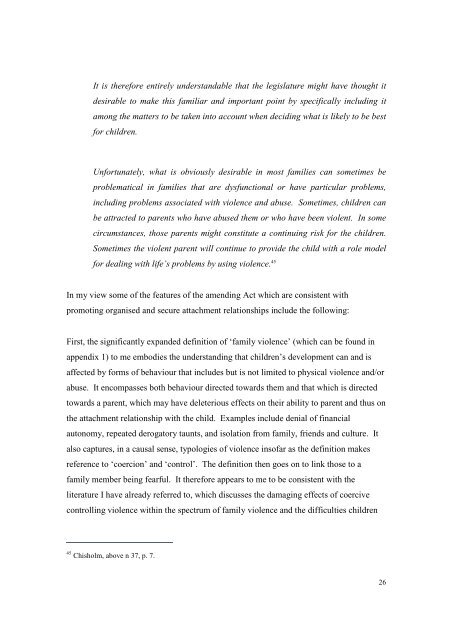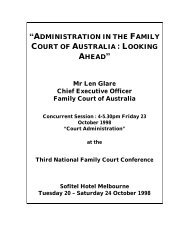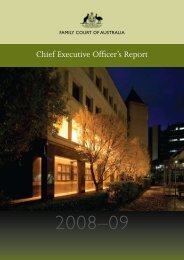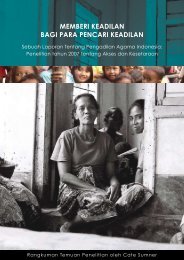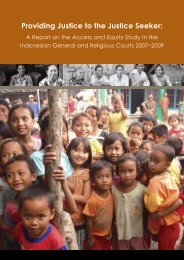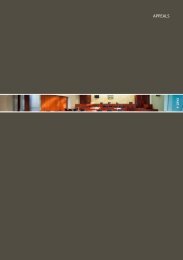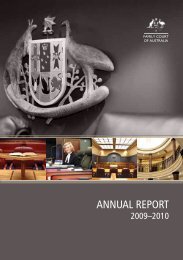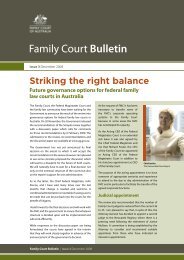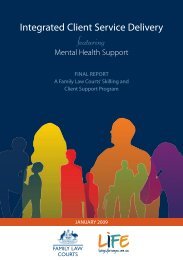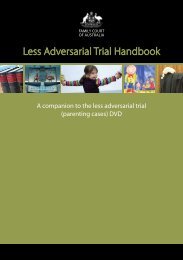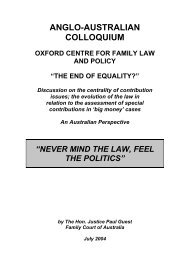Attachment Theory and the Family Violence Reforms
Attachment Theory and the Family Violence Reforms
Attachment Theory and the Family Violence Reforms
You also want an ePaper? Increase the reach of your titles
YUMPU automatically turns print PDFs into web optimized ePapers that Google loves.
It is <strong>the</strong>refore entirely underst<strong>and</strong>able that <strong>the</strong> legislature might have thought itdesirable to make this familiar <strong>and</strong> important point by specifically including itamong <strong>the</strong> matters to be taken into account when deciding what is likely to be bestfor children.Unfortunately, what is obviously desirable in most families can sometimes beproblematical in families that are dysfunctional or have particular problems,including problems associated with violence <strong>and</strong> abuse. Sometimes, children canbe attracted to parents who have abused <strong>the</strong>m or who have been violent. In somecircumstances, those parents might constitute a continuing risk for <strong>the</strong> children.Sometimes <strong>the</strong> violent parent will continue to provide <strong>the</strong> child with a role modelfor dealing with life’s problems by using violence. 45In my view some of <strong>the</strong> features of <strong>the</strong> amending Act which are consistent withpromoting organised <strong>and</strong> secure attachment relationships include <strong>the</strong> following:First, <strong>the</strong> significantly exp<strong>and</strong>ed definition of ‘family violence’ (which can be found inappendix 1) to me embodies <strong>the</strong> underst<strong>and</strong>ing that children’s development can <strong>and</strong> isaffected by forms of behaviour that includes but is not limited to physical violence <strong>and</strong>/orabuse. It encompasses both behaviour directed towards <strong>the</strong>m <strong>and</strong> that which is directedtowards a parent, which may have deleterious effects on <strong>the</strong>ir ability to parent <strong>and</strong> thus on<strong>the</strong> attachment relationship with <strong>the</strong> child. Examples include denial of financialautonomy, repeated derogatory taunts, <strong>and</strong> isolation from family, friends <strong>and</strong> culture. Italso captures, in a causal sense, typologies of violence insofar as <strong>the</strong> definition makesreference to ‘coercion’ <strong>and</strong> ‘control’. The definition <strong>the</strong>n goes on to link those to afamily member being fearful. It <strong>the</strong>refore appears to me to be consistent with <strong>the</strong>literature I have already referred to, which discusses <strong>the</strong> damaging effects of coercivecontrolling violence within <strong>the</strong> spectrum of family violence <strong>and</strong> <strong>the</strong> difficulties children45 Chisholm, above n 37, p. 7.26


